Abstract
Crystalloids accumulate in the vacuoles of the giant sporangiophores of Phycomyces blakesleeanus Burgeff during growth. On the basis of solubility in alkaline solutions, cytochemical staining reactions, trypsin sensitivity, optical absorption and response in the Lowry protein test, the crystalloids have been judged to consist principally of an acidic protein. In assays by Lowry test and by reference to optical absorption at 280 mμ, dark-grown sporangiophores were consistently found to contain from 2 to 4 times as much crystalloid material as light-grown counterparts. Concurrent assays of soluble phenolic materials revealed no significant effect of culture illumination, while carotene content of sporangiophores and mycelium was found to be raised from 2 to 4-fold by illumination during growth.
Full text
PDF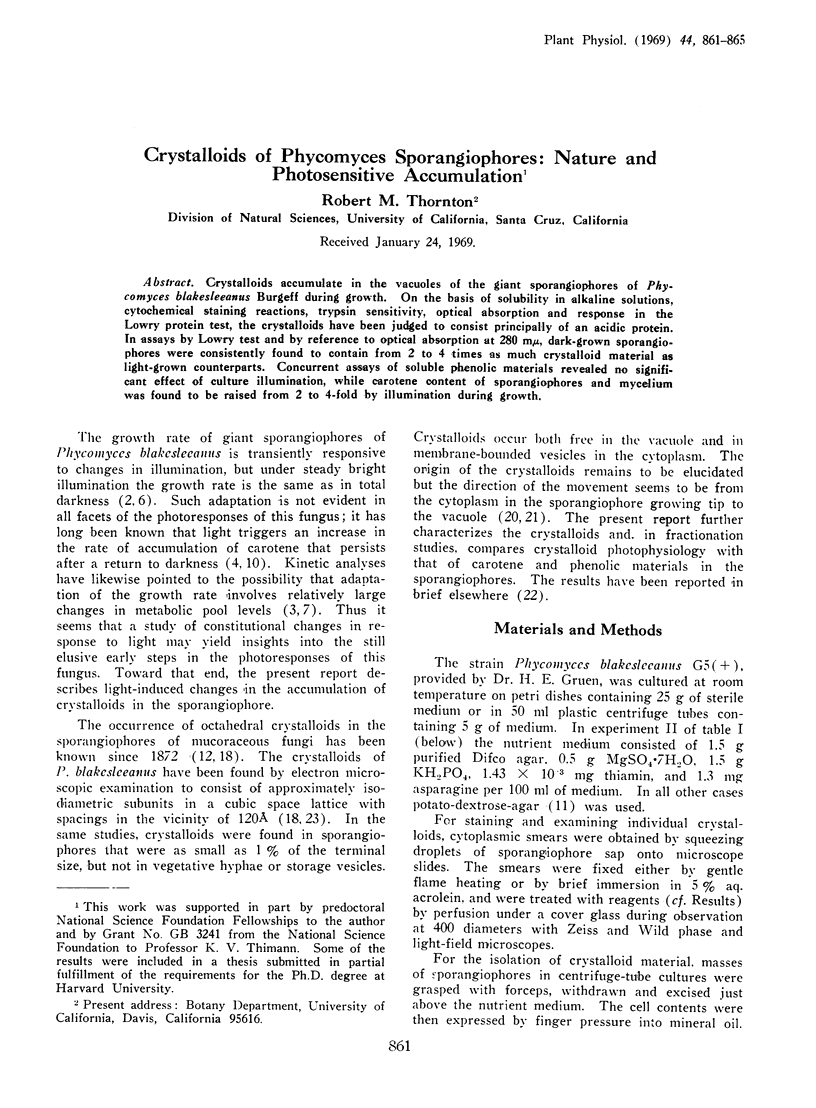
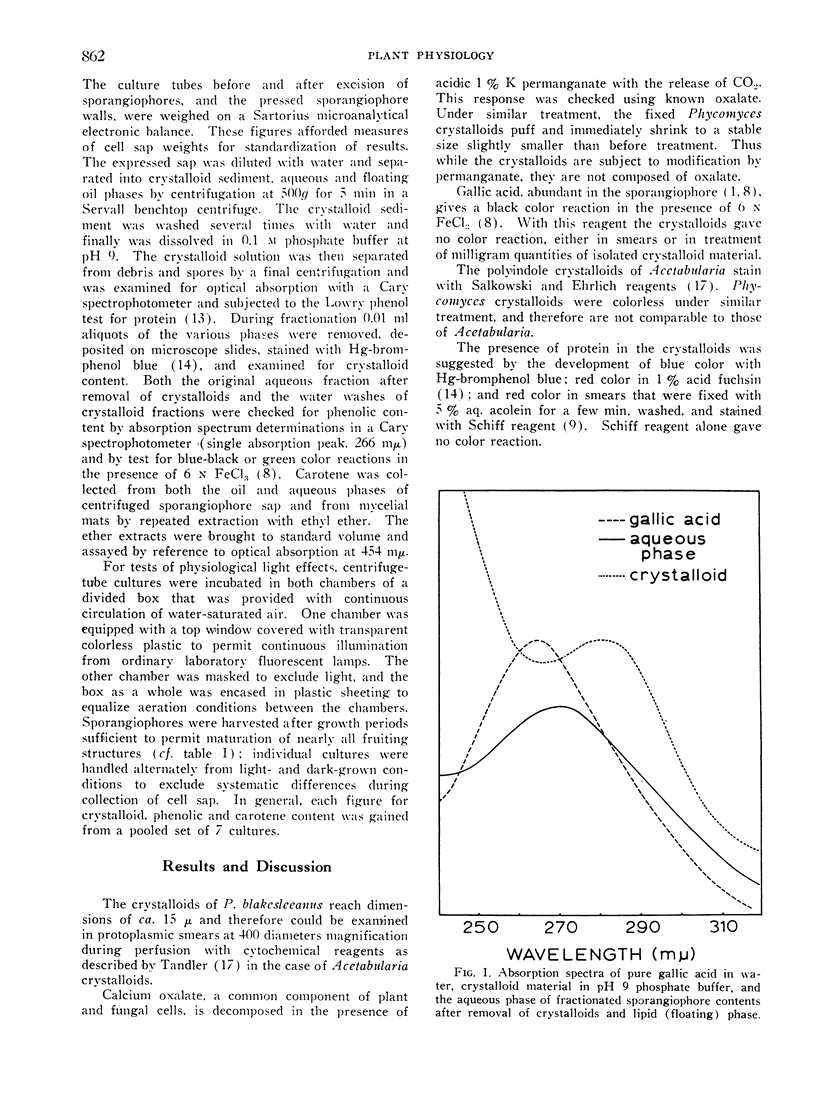
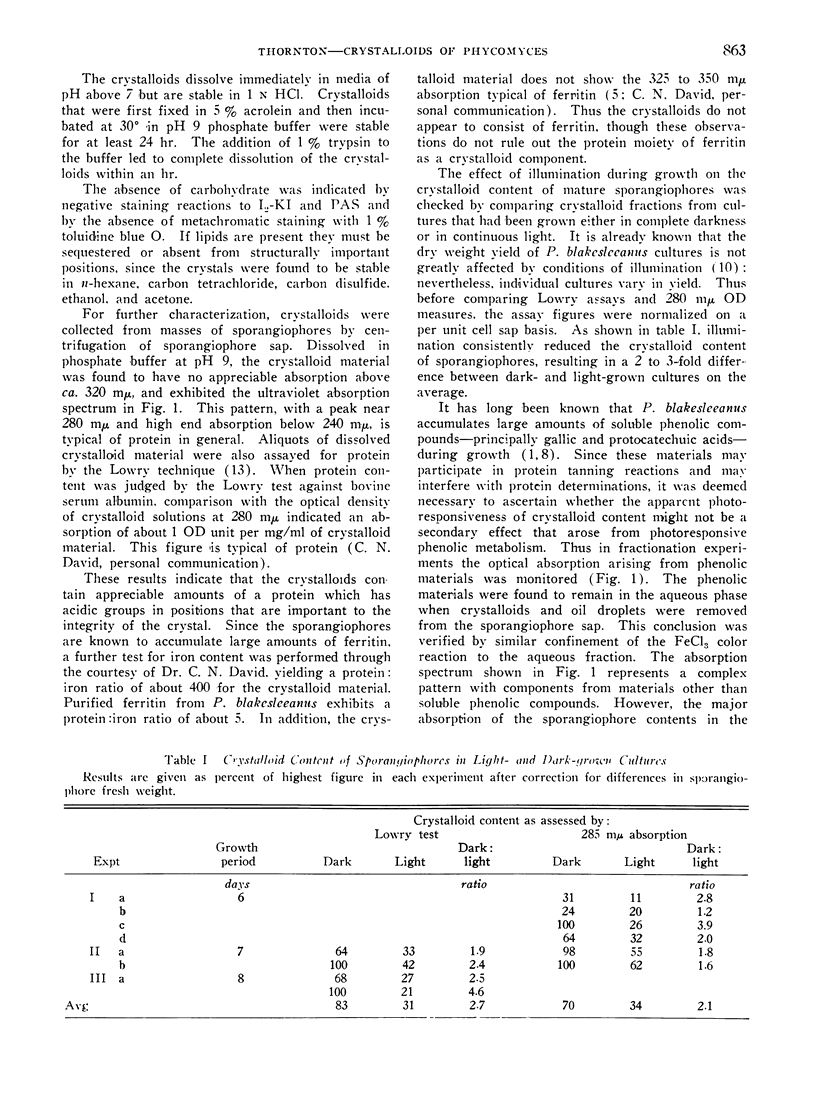
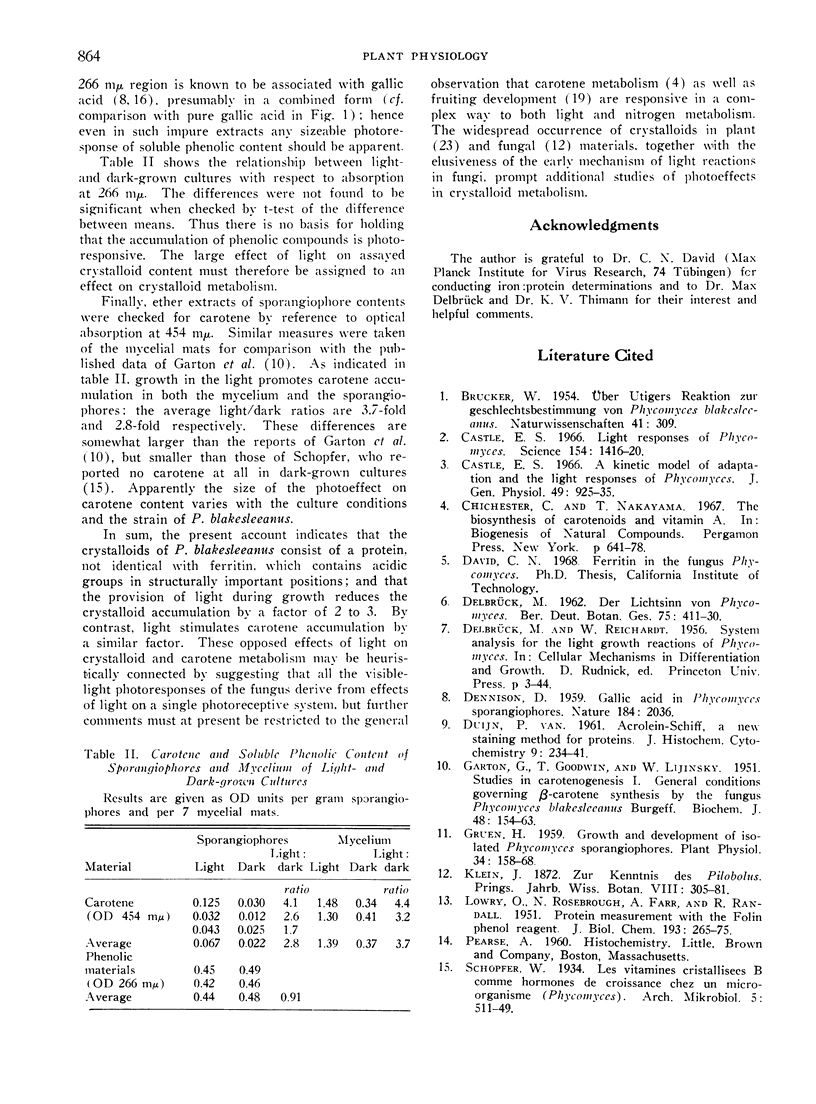
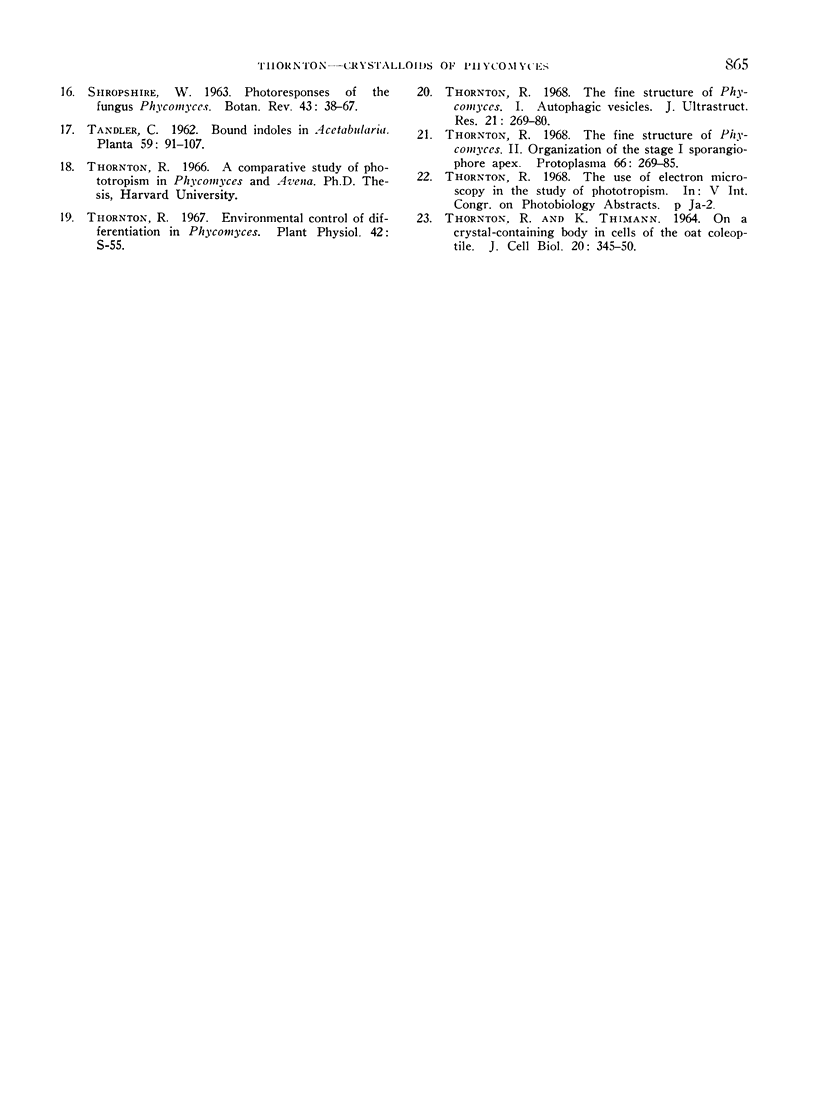
Selected References
These references are in PubMed. This may not be the complete list of references from this article.
- Castle E. S. A kinetic model for adaptation and the light responses of Phycomyces. J Gen Physiol. 1966 May;49(5):925–935. doi: 10.1085/jgp.49.5.925. [DOI] [PMC free article] [PubMed] [Google Scholar]
- Castle E. S. Light responses of phycomyces. Science. 1966 Dec 16;154(3755):1416–1420. doi: 10.1126/science.154.3755.1416. [DOI] [PubMed] [Google Scholar]
- GARTON G. A., GOODWIN T. W., LIJINSKY W. Studies in carotenogenesis; general conditions governing beta-carotene synthesis by the fungus Phycomyces blakesleeanus Burgeff. Biochem J. 1951 Feb;48(2):154–163. doi: 10.1042/bj0480154. [DOI] [PMC free article] [PubMed] [Google Scholar]
- Gruen H. E. Growth and Development of Isolated Phycomyces Sporangiophores. Plant Physiol. 1959 Mar;34(2):158–168. doi: 10.1104/pp.34.2.158. [DOI] [PMC free article] [PubMed] [Google Scholar]
- LOWRY O. H., ROSEBROUGH N. J., FARR A. L., RANDALL R. J. Protein measurement with the Folin phenol reagent. J Biol Chem. 1951 Nov;193(1):265–275. [PubMed] [Google Scholar]
- SHROPSHIRE W., Jr Photoresponses of the fungus, Phycomyces. Physiol Rev. 1963 Jan;43:38–67. doi: 10.1152/physrev.1963.43.1.38. [DOI] [PubMed] [Google Scholar]
- Thornton R. M. The fine structure of Phycomyces. 1. Autophagic vesicles. J Ultrastruct Res. 1967 Dec 12;21(3):269–280. doi: 10.1016/s0022-5320(67)80096-0. [DOI] [PubMed] [Google Scholar]
- van DUIJN Acrolein-Schiff, a new staining method for proteins. J Histochem Cytochem. 1961 May;9:234–241. doi: 10.1177/9.3.234. [DOI] [PubMed] [Google Scholar]


